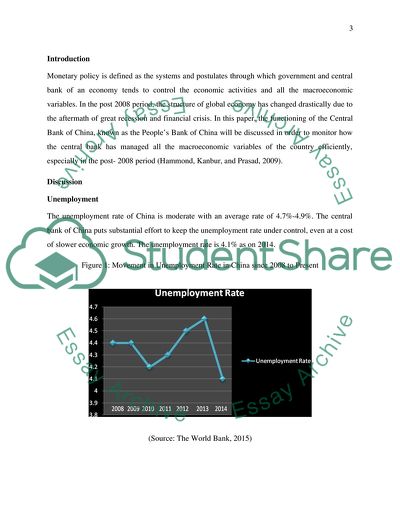Cite this document
(Prepare a country report on the monetary policy of a central bank of Essay, n.d.)
Prepare a country report on the monetary policy of a central bank of Essay. https://studentshare.org/macro-microeconomics/1864446-prepare-a-country-report-on-the-monetary-policy-of-a-central-bank-of-your-choice-in-the-post-2008-period-by-referring-to-unemployment-dynamics-of-credit-markets-and-inflation-exchange-rate-and-trade-aggregate-demand-and-the-monetary-transmission-mechan
Prepare a country report on the monetary policy of a central bank of Essay. https://studentshare.org/macro-microeconomics/1864446-prepare-a-country-report-on-the-monetary-policy-of-a-central-bank-of-your-choice-in-the-post-2008-period-by-referring-to-unemployment-dynamics-of-credit-markets-and-inflation-exchange-rate-and-trade-aggregate-demand-and-the-monetary-transmission-mechan
(Prepare a Country Report on the Monetary Policy of a Central Bank of Essay)
Prepare a Country Report on the Monetary Policy of a Central Bank of Essay. https://studentshare.org/macro-microeconomics/1864446-prepare-a-country-report-on-the-monetary-policy-of-a-central-bank-of-your-choice-in-the-post-2008-period-by-referring-to-unemployment-dynamics-of-credit-markets-and-inflation-exchange-rate-and-trade-aggregate-demand-and-the-monetary-transmission-mechan.
Prepare a Country Report on the Monetary Policy of a Central Bank of Essay. https://studentshare.org/macro-microeconomics/1864446-prepare-a-country-report-on-the-monetary-policy-of-a-central-bank-of-your-choice-in-the-post-2008-period-by-referring-to-unemployment-dynamics-of-credit-markets-and-inflation-exchange-rate-and-trade-aggregate-demand-and-the-monetary-transmission-mechan.
“Prepare a Country Report on the Monetary Policy of a Central Bank of Essay”. https://studentshare.org/macro-microeconomics/1864446-prepare-a-country-report-on-the-monetary-policy-of-a-central-bank-of-your-choice-in-the-post-2008-period-by-referring-to-unemployment-dynamics-of-credit-markets-and-inflation-exchange-rate-and-trade-aggregate-demand-and-the-monetary-transmission-mechan.


